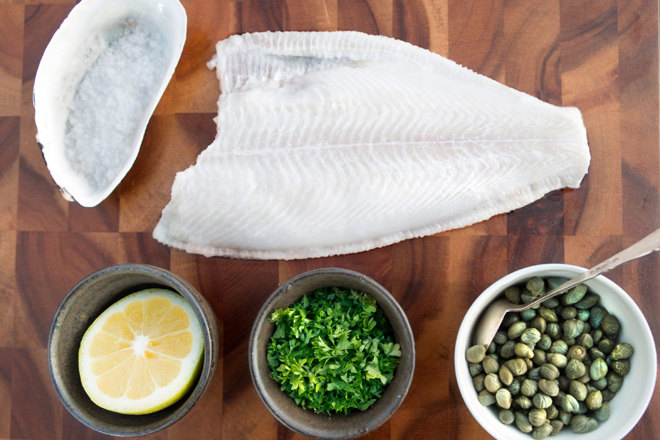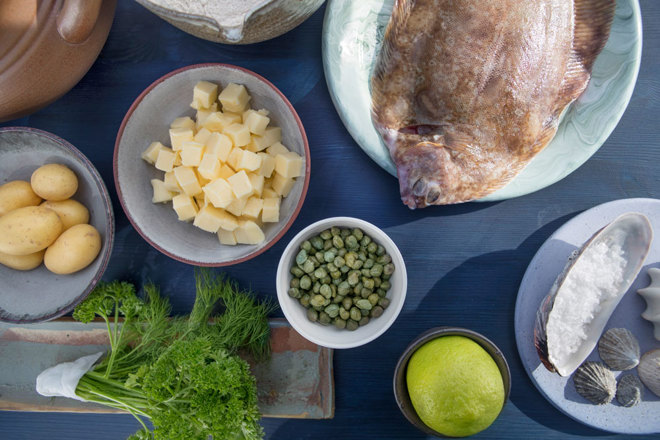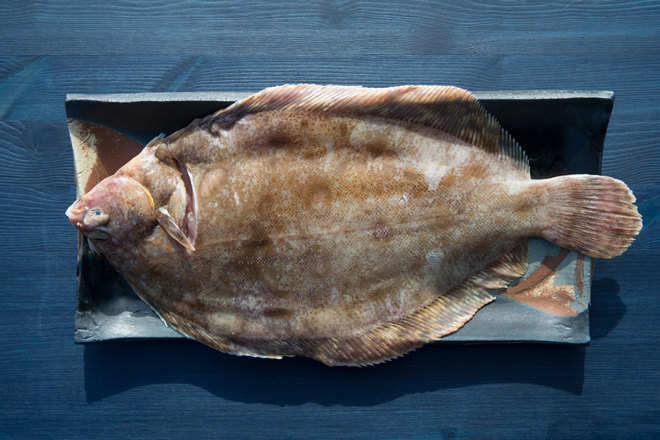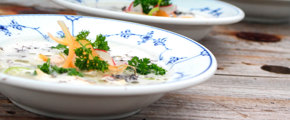Lemon sole
The Lemon sole does not exactly live up to its name, as it does not taste of lemon. It is a flatfish that lives around the shores of the North Atlantic, including the Faroe Islands. The flesh is delicate and sweet in taste, making it a favourite amongst flatfish.
While lemon sole might not be as versatile as other white fish, it is perfect for simple dishes with an elegant taste.
The lemon sole has a very delicate and tender meat with a lot of texture. It can be easily baked, steamed and grilled.



Like other flatfish, the lemon sole is very lean, so one must be careful not to overcook it. To avoid this, breading and brining techniques can be used. Cooking with high temperatures and keeping the skin intact during the process also limits the risk of overcooking.
As the lemon sole has a very mild, almost sweet taste, it can easily be overpowered. Lemon sole works perfectly with simple sauces. Lightly season the meat with salt and peppercorns and serve it with an elegant white wine sauce or mild tasting cheese sauce and you have a delicious and healthy dish.
Lemon sole is rich in protein, vitamin B, phosphorous and iodine.

Try out Faroese chef Gutti Winther recipe for the French classic dish Lemon sole meuniere.
Biology
Like most flatfish, the Lemon sole (Microstomus) has a rather peculiar look. It has a small head with small protruding eyes that are very close together and a small mouth.
They are usually various shades of reddish brown, with a tinge of pink and orange, pink and green flecks and a white underside. The lemon sole has an orange patch behind its pectoral fin. The skin is very slimy and has an almost pearlescent shine to it.

The lemon sole likes a mixed seabed, with small stones and sand. They keep to coastal areas and live at depths of 20 to 220 metres. They eat marine worms, prawns, crabs and shellfish. They travel to shallower waters to spawn during spring and migrate further out as they mature. The larvae start out similar to those of round fish, but eventually they develop their flatfish traits.
The name lemon sole is a misnomer, as it is not technically of the solee fish family, nor does it taste of lemon. The name lemon sole most likely comes from its French name "sole limande". ”Limande” may come from the French word lime (file) a tool used to smooth wood and wood metal, referring to the texture of the fish's skin. Limande may also come from the French word "limon" (silt).
The lemon sole lives close to shore all across the North Atlantic. Stocks are found around Iceland, the Faroe Islands, the British Isles, the North West coast of Europe and along the entire outer coast of Norway.
The Faroe Islands have fished for lemon sole almost exclusively in Faroese waters, where the stock is significant. Faroese vessels use bottom trawls to fish for lemon sole.






